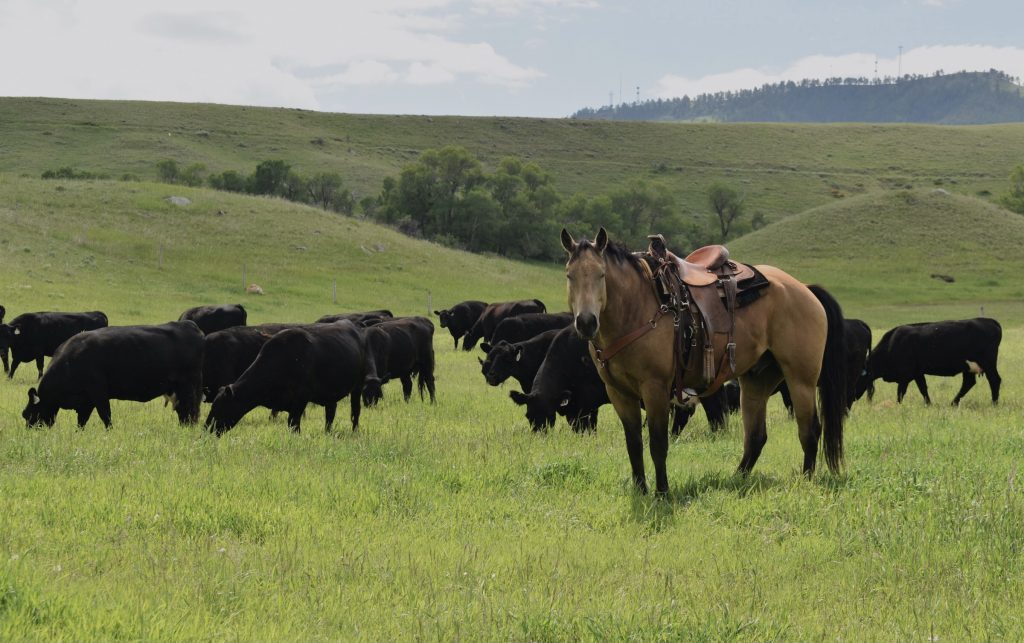Grazing records: Monitoring pasture productivity improves grazing confidence and profitability

Keeping records on precipitation, forage quality, grazing rotations and cost of grazing is just as important for producers as keeping records on livestock performance, especially as the threat of drought is on the horizon.
The Beef Cattle Research Council (BCRC) hosted a webinar titled Record Keeping for Forage and Grass Management on March 23. The webinar featured a panel consisting of Ryan Boyd of South Glanton Farms, Jeremy Brown from Ducks Unlimited Canada and Steve Kenyon of Greener Pastures Ranching, LTD.
Panelists discussed utilizing stocking rate guides from land management agencies, which records aid in management and how records can be useful in determining the profitability of an operation in terms of grazing.
Stocking resources
“For the most part, many producers have a handle on the carrying capacity of their pastures based on past experience, local knowledge or recordkeeping and those will be the best measures for any individual pasture,” says Brown. “But, in some cases, producers may not have this information if they purchased or took over new land or set up a new pasture.”
Brown explains producers can use stocking rate guides based on forage and soil types of specific regions to get started. He notes these guides can lead producers to figuring healthy stocking rates for their pastures.
Additionally, Brown shares the best way to get started on figuring stocking rates for pastures is to contact a range management professional. These resources could include Extension personnel or range specialists with the Forest Service, Bureau of Land Management or the Natural Resource Conservation Service.
“These guides are a good starting point, but they do have some limitations,” Brown continues. “Pastures above or below average annual precipitation and forage production will have varying estimates, stocking rates are reported in animal unit months (AUMs) and resources assume continuous grazing.”
He explains AUMs are based on the forage one 1,000 pound cow requires for one month, while many producers could be more comfortable talking about animal grazing days or days per acre grazed.
“If producers are using all of the good grazing principles, including rest periods, distribution and grazing timing, productivity of the pasture can increase significantly,” Brown notes.
Although there are limitations, Brown shares these resources do hold real-world relevance. Their calculations are on the conservative side, but they are useful.
Records to aid management
“Keeping records is a very manageable tool and I wouldn’t be able to manage the way I do without keeping records,” says Brown. “I keep track of dates cattle were in pastures, the number of head in each pasture and the number of days per acre grazed.”
He continues, “I also keep track of totals from year to year so I can easily track trends over the year. I track rainfall and try to keep notes on what pastures were like at the end of the season, taking into consideration what could have been done differently.”
Recordkeeping on South Glanton Farms includes rainfall, pasture inventory and productivity, biological indicators and animal performance, according to Boyd.
“All of this comes together to produce a profitable system with desirable environmental outcomes,” he explains. “We are monitoring constantly in the grazing program.”
In fact, Boyd shares the operation monitors pastures for biological indicators including soil nutrient content, organic matter, plant density and litter cover and monitors the cowherd for weight gain in yearling cattle, body condition, conception rate and garage quality.
He adds this recordkeeping can be kept simple with cell phones, including free apps, photo and data entry sheets.
“I don’t think having elaborate records is necessary,” Brown states. “Producers need to do whatever they have time for and whatever suits their goals.”
“What is critical is planning things out, monitoring pastures, replanning and keeping track of what actually happened on the ground. This gives producers confidence for setting up things in the future and prepares producers to make decisions required for changing conditions.”
Economics and grazing
Kenyon keeps grazing records on a grazing chart to plan, but notes it also works as a yield calculator.
“This allows me to figure the profitability on each paddock, and this is powerful down the line,” Kenyon explains. “All of this can help producers make good decisions if they understand the economics behind grazing.”
He adds, “Using a pasture cost calculator to include fencing, water, labor, etc. can allow producers to look at gross margins for each pasture and determine which costs might be too high to be profitable.”
Averi Hales is the editor of the Wyoming Livestock Roundup. Send comments on this article to roundup@wylr.net.





